Early Spring
Is the beginning of spring really early March? as calendars and diaries portray in their photographs of daffodil and tulip blooms. If you have been out and about in the countryside you will no doubt have noticed some early signs of spring already; in the environment spring has already started. In fact, I noted some signs before the end of the year, a Tawny Owl was calling on a number of occasions, declaring its territory at the bottom of my driveway, punctuating a crisp still night with its long, quavering call. The male was clearly establishing its right to its territory from any youngsters, now fully mature, keen to muscle in.
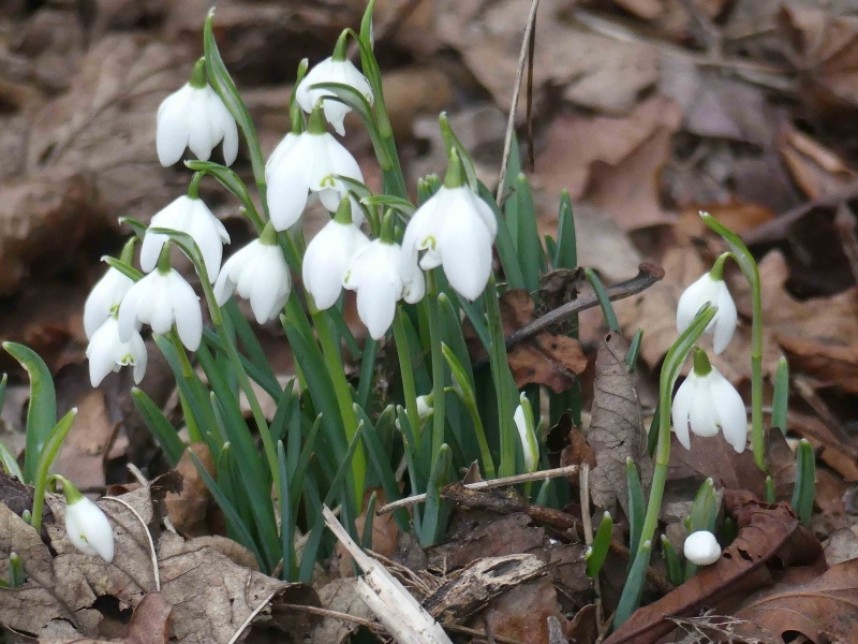
Snowdrops © Margaret Boyd
The Daffodils and other early bulbs are peaking through the hard, frosty ground, so it won’t be long before the garden and the wider countryside is lit up with the mass of yellow. The majority of the daffodils that we see at this time of year are likely to be garden varieties, the truly wild Daffodils, found in woodlands or damp meadows are not in flower till late April. Look closer though and you can find species already in flower, I saw my first Snowdrops on New Year’s Day; their flowers providing essential nectar for winter flying invertebrates.
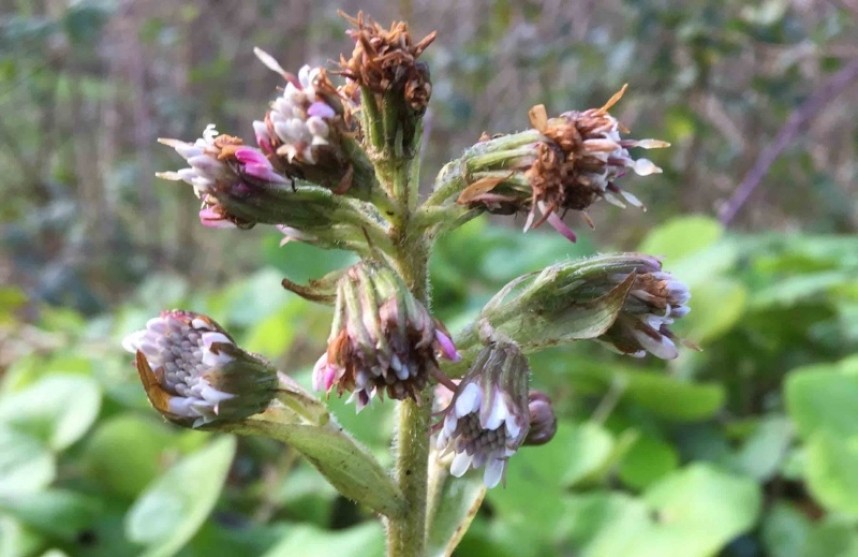
Winter Heliotrope © Margaret Boyd
A lesser-known early spring flower is the Winter Heliotrope; found in damp places such as hedgerow bottoms or woodlands. Its distinctive heart or kidney shaped leaves cover the woodland floor and bursting through them on tall stems are the rosettes of delicate pink and white flowers, subtly bursting open to attract pollinators. The creeping rhizome of this plant can make it an invasive weed, unwelcomed by many gardeners, but I find it a welcome addition to the countryside in the dark days of winter. Searching low down on the ground, often hidden by leaf litter are the stalk less bract -like, dark green leaves of Yellow Aconites and their tight round yellow buds, ready to burst open. These will soon be followed by Lesser Celandines spreading across the woodland floor. Ivy has been flowering for a while now, its nectar attracting invertebrates, which in turn attract birds such as Wrens, Dunnocks and Robins. Blue and Coal Tits in my garden have been feeding on the flowers of the spiky Mahonia bush which has been in flower since late November. Wild flowers are in bloom throughout the year.
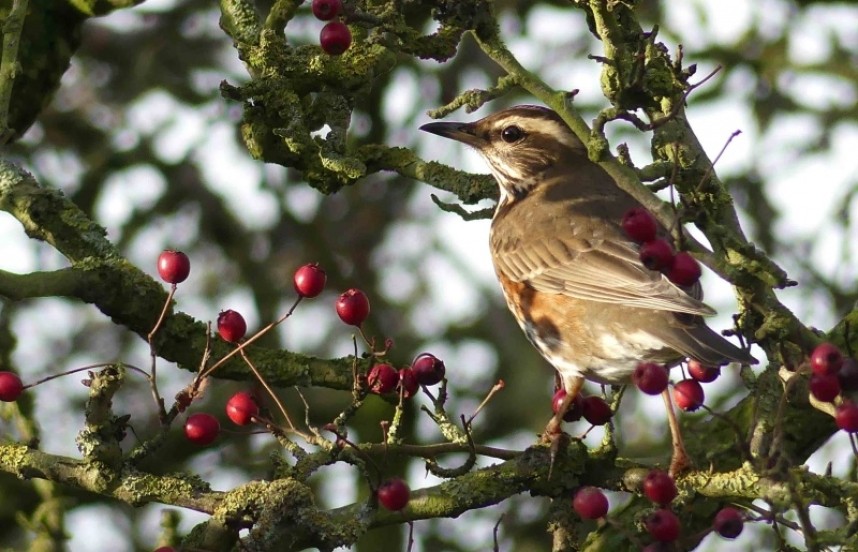
Redwing © Margaret Boyd
Bird wise, large mixed flocks of finches; Linnet, Reed Bunting, Yellowhammers, Chaffinches & Greenfinches and winter thrushes; Redwings & Fieldfares are still busy feeding. Stubble and cover crops and engorged hedgerows that have been full of beautiful, red Hawthorn berries were very popular habitats in December. Numbers in these flocks can be well into the hundreds. Other winter visitors however are showing signs of moving on.
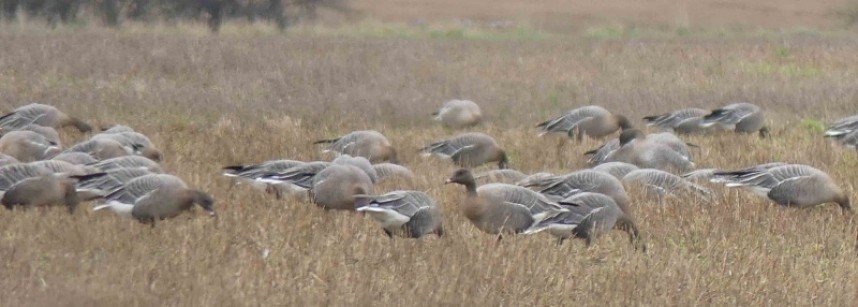
Pink-footed Geese in a local stubble field © Margaret Boyd
Large flocks of pink footed geese have been a regular occurrence in east Yorkshire this winter; staggering numbers of up to 8-10,000 birds have been seen, a magnificent and unusual sight in the area. Since the new year the flocks have dwindled and moved on to other foraging sites, thought to be further west and north, building up their reserves for the long flight back to their breeding grounds in Spitsbergen, Iceland and Greenland.
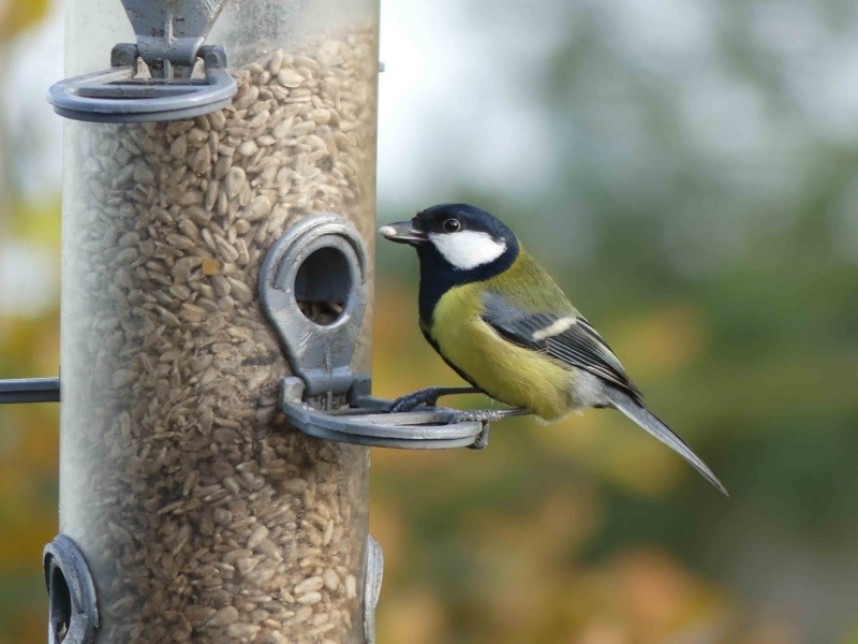
Great Tit © Margaret Boyd
Our resident species are starting to sing, and on a crisp, frosty morning the splendid plumage of a Great Tit uttering its “teacher, teacher” is truly an iconic start to the spring that is emerging around us in our gardens. Other birds are also showing signs of mating, Tree Sparrows have been investigating our bird boxes and male Chaffinches have been displaying with females, chasing them from tree to tree. As the weeks progress more and more birds will start to defend their territories and attract mates by bursting into song.
When nights in January are long then you may still be awake to hear the sounds of your local Foxes mating, the blood curdling screams of the vixen or the barking of the dog fox. If you have a stable fox population nearby then you might have noticed a smell in the air, both male and females leave scent marks and scat on strategic objects such as rocks or stumps, especially ones that are above any fallen snow. Look out for sights and smells of the shy country fox, whereas in urban areas you may notice that your resident foxes are coming less for food, a sign that they have other things on their mind! The resulting cubs will be born in March.
The lengthening of the daylight hours, although slow, is noticeable, making animals respond and change. Giving light and hope of the spring and summer ahead.
Margaret Boyd
Yorkshire Coast Nature



 Back to Blog
Back to Blog
